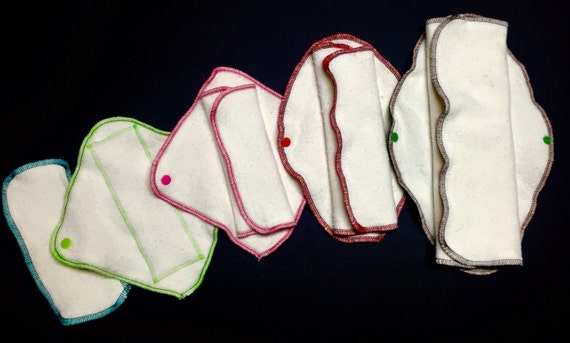Scrap Happens
In my line of work, let's face it I generate a lot of scraps. I also totally try live by the philosophy of "waste not; want not". So what happens is bags and boxes full of scraps in my sewing room.Admittedly I have such an issue (Repeating softly to self: 'I am NOT a fabric hoarder, I am NOT a fabric hoarder...') with this that they often overflow into my bedroom, my children's bedroom, closets, places like that. When they begin to make appearances in more public domain's like my kitchen and my living room I decide it's time to do something with them all.
To that end I have striven to come up with ever more smaller, useful products that I am able to then offer to my customers. For example all of my PUL scraps now see new life as waterproof pouches and snack bags. If they are too small to be pouches I try to use them to create decorative wings for my training pants and diapers. My wool scraps get cut up and used to make nursing pad backings and patchwork woolies. Other fabric scraps such as my flannel have become interlabial pads and (NEW) facial rounds, which is about as small as you can get.
 |
| My Scrap-Sorting Center |
Now look I'm just going to be honest, I do not have the time or patience for old-fashioned quilting. The cutting the little tiny seams, ironing between each piece, pinning, ugh! it's just not for me. While I certainly admire the beauty of these quilts and the women who make them, I simply don't have the patience or time to do them. I have even tried crazy quilting where you don't have to cut the pieces exactly, unfortunately you still have to iron between each sewing and pin when necessary and other things like that.


I like to have a project that I can see the outcome of very quickly it helps me to gain momentum for completing it.To that end I developed a completely new style of quilting. Well OK it's hard to claim that my anything is completely new anymore because as we've all heard there are no new ideas under the sun. However in all of my Internet searches for an easy way to use my scraps I have never encountered this method of quilting.
 Basically I simply overlap two scraps of fabric about a half an inch and use a decorative stitch to sew them together. Think of the outcome as something between a crazy quilt and I rag quilt.
Basically I simply overlap two scraps of fabric about a half an inch and use a decorative stitch to sew them together. Think of the outcome as something between a crazy quilt and I rag quilt.
The result is that you have the artistic flexibility in your quilt top that you would get with regular quilting while having the ease of production you get with the crazy quilt.
It helps that most of my scraps are in the form of narrow strips or irregular blocks. This means that I can assemble the quilt top in rows. Then I simply fold them over on themselves and cut them so they are actually the same width/height along the whole row. Then I sew the rows together to the length that I desire or the width of my quilt.
 |
| Two Rows of Scraps joined with seam on reverse |
To further simplify things, I prefer to back these in fleece or with two layers of flannel or sometimes even just one layer of flannel for a very lightweight quilt. I find it it's a lot easier to tie off on fleece or to quilt through flannel than to try and have three even layers with batting in the middle.
 |
| Close Up of Quilt Top |














